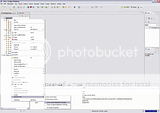 I am a big fan of Remember The Milk (RTM), the online to-do list manager. It’s one of the few sites (like flickr) that I’m happy to pay for.
I am a big fan of Remember The Milk (RTM), the online to-do list manager. It’s one of the few sites (like flickr) that I’m happy to pay for.
For some reason, the logo for RTM is a cow’s face. Which means that I get a cow staring at me when I’m deciding what I need to do next.
I had a random thought this evening – that the cow should really look more sympathetic when my task list is so full. Because he’s really quite heartless, even when I’m manically busy. 😉
And once I had the idea, I kinda had to give it a quick try. (And I wonder why I’m busy…)
So I’ve knocked up a quick Greasemonkey script – which should work with Firefox with the Greasemonkey add-on, or with Google Chrome.




